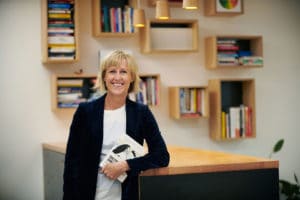Why you need to first become a problem finder, not a problem solver

In the early 1970s, Dr. Min Basadur was working as a company-wide creative problem-solving consultant at Procter & Gamble in the USA, when he got a call from a team in product development.
‘We need some help,’ Basadur remembers the team leader told him.
For six months, the team had been struggling to come up with a product to outperform Irish Spring, a new and popular green-and-white striped soap bar from Colgate, that included a TV ad showing a man in a meadow, showering with the soap and feeling totally refreshed.
Irish Spring was revolutionary – within a year of its launch, it became a billion-dollar business. So as Colgate’s market share rocketed, Procter & Gamble knew it was only a matter of time before its own declined.
The Procter & Gamble product development team had already tried six times to come up with a soap bar, in different shades of green. None of which beat Irish Spring based on blind consumer tests. The company had a rule it wouldn’t launch a product unless it could beat a competitor or incumbent in a blind test.
Basadur organized a full-day problem finding session for this team that was losing confidence. He started with the problem they’d been working on for six months, which was to create a better green-striped soap bar.
Then Basadur asked another question: ‘Why might we want to make a better green-striped bar?’
The team’s answer was that they’d lost market share. ‘Why else might we want to create a better green-striped bar?’ Basadur continued. He encouraged his colleagues to think from a consumer’s perspective.
One team member volunteered, ‘We’d like to make people feel more refreshed.’
‘That was the aha moment – we had redefined the problem. That was the secret to the process,’ explains Basadur. This led the team to define their problem as: ‘How might we make a more refreshing soap bar?’
The team settled on this problem statement, and that afternoon generated several hundred possible ideas to the question. Out of this session came the solution to create a bar that reminded people of the beach or the sea coast.
Procter & Gamble subsequently launched its soap bar called ‘Coast’, featuring swirly blue stripes, after it beat Irish Spring in the blind consumer test.
You can still find both Coast and Irish Spring in the market today – along with many similar competitor products.
Look before you leap
It only took Procter & Gamble’s product development team a day to find a creative breakthrough, after previously wasting six months in their innovation efforts. Prior to the session with Basadur, they had defined the problem too narrowly, jumping too quickly to solutions fixated on green stripes.
Now I’m sure you can relate to something like that in your own organization, right?
In a 2017 Harvard Business Review study, Are You Solving the Right Problems?, 85 percent of 106 C-Suite executives agreed their organizations were bad at diagnosing problems, with 87 percent of them believing this flaw carried significant costs.
Businesses are under incredible pressure from constant deadlines and the need for short-term results. Business leaders want immediate outcomes, which creates a culture of ‘doing’. When a problem arises, we quickly jump to solution finding, without isolating what the real problem is.
You can probably articulate your own business problems – falling revenues or margin decline – but what are the consumer problems you’re trying to solve? And how do you find them? These questions are your key to growth and competitive advantage.
The sweet spot lies between a business problem and a consumer problem – a solution that you can commercialize, which consumers actually want or need.
The answer is to the first problem find, not problem solve.
If we don’t initially take the time to dig deep, to observe and figure out what is really going on, then we will most likely waste time, money and resources on a solution that will have little impact.
Step into their shoes
You need to be able to walk in the shoes of your consumers – to find clues and insights to build a holistic picture of their experiences. Through their eyes, spend time discovering their needs, hopes, fears, and values, noticing what delights plus their irritations and frustrations.
Curiously observe what your customers say, and what they do, to understand what matters to them. This is the ideal starting point to find the right problems to solve. Curiosity is the tool we use to find our customers’ most valuable problems; to turn these insights into opportunities.
Having this deep understanding of your customers’ problems is essential to inspiring business growth. Understanding your customers’ real problems (not the perceived ones), will help you to start solving them and likely stimulate business growth opportunities. It will guide you to implement initiatives that will truly benefit (not drain) your bottom line.
Albert Einstein was once asked, ‘If you have one hour to save the world, how would you spend that hour?’ He replied, ‘I would spend 55 minutes defining the problem and then five minutes solving it’. That’s exactly what we must learn to do.
Bring the best of the CEOWORLD magazine's global journalism to audiences in the United States and around the world. - Add CEOWORLD magazine to your Google News feed.
Follow CEOWORLD magazine headlines on: Google News, LinkedIn, Twitter, and Facebook.
Copyright 2025 The CEOWORLD magazine. All rights reserved. This material (and any extract from it) must not be copied, redistributed or placed on any website, without CEOWORLD magazine' prior written consent. For media queries, please contact: info@ceoworld.biz










